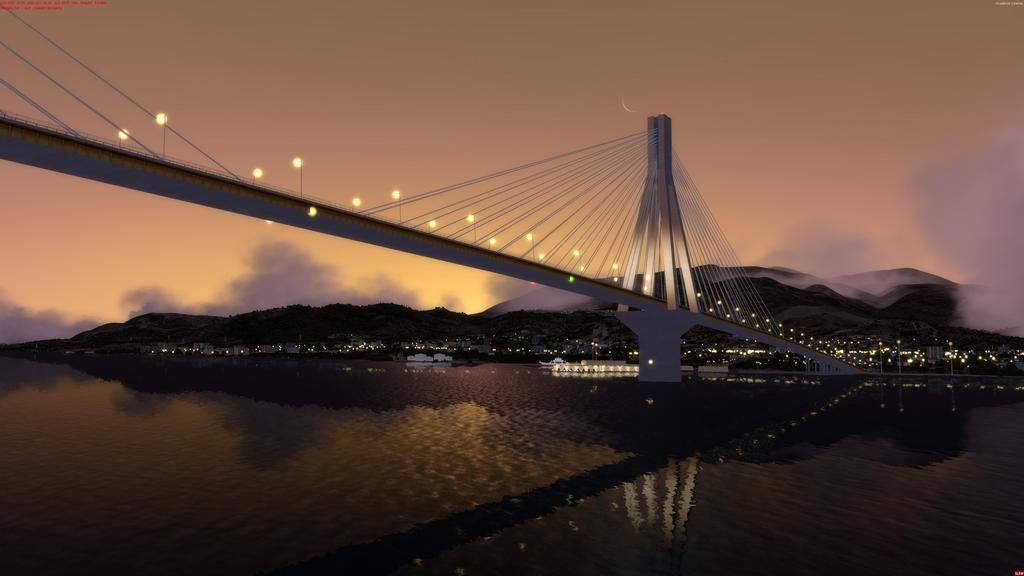-
There seems to be an uptick in Political comments in recent months. Those of us who are long time members of the site know that Political and Religious content has been banned for years. Nothing has changed. Please leave all political and religious comments out of the forums.
If you recently joined the forums you were not presented with this restriction in the terms of service. This was due to a conversion error when we went from vBulletin to Xenforo. We have updated our terms of service to reflect these corrections.
Please note any post refering to a politician will be considered political even if it is intended to be humor. Our experience is these topics have a way of dividing the forums and causing deep resentment among members. It is a poison to the community. We appreciate compliance with the rules.
The Staff of SOH
-
Please see the most recent updates in the "Where did the .com name go?" thread. Posts number 16 and 17.
You should upgrade or use an alternative browser.
Prepar3D v3 Screenshots
- Thread starter IanHenry
- Start date
gman5250
Charter Member
Location:
KMMH, Mammoth Yosemite Airport to KBIH, Eastern Sierra Regional Airport, both works in progress but presentable. The vegetation library is also WIP and closing in on RTM status.
KMMH runway elevation is 7135 ft. and thus requires a leaner mixture at TO, often presents some very nasty cross winds and katabatic winds and is subject to wild variations in density altitude depending on season. You will note the lean settings used during run-up.
The route takes the flight out of KMMH, west to the "Silver Divide", then east southeast down the range towards KBIH Bishop, CA . The scenery, which covers approximately 200 sq. miles, consists of extremely high definition photo satellite imagery with hyper accurate hand annotated autogen. The autogen itself is a new approach to an existing technology, with highly enhanced bitmaps which render in a more natural representation in both CG and photo realistic applications. The goal with the autogen is to eliminate the cookie cutter appearance of earlier technologies, while improving overall performance. More on this later.
The two featured airports and the vegetation library are works in development and test beds for existing and new technologies I am exploring, which take advantage of Prepar3D advancements as applied to their simulator platform. All of the vegetation is designed using a new technology I have developed and which will be released in the near future. The airports and satellite imagery will be fully seasonal when released, effectively combining satellite imaging and seasonal autogen.
Setup is basically sliders maxed with the exception of tessellation, which is at medium.
REX Texture Direct with Soft clouds.
Prepar3D "Building Storms" weather activated.
Computer specs below in my signature.
FPS was set at locked 30 to synch with the recording and video software. Even with the massive scenery files, 32 bit aircraft skins and the demanding high resolution (multiple) textures utilized in the JV VC, the airplane performs seamlessly. This scenario is a major heavy hitter, but as you can see, is quite capable of delivering a fully immersive experience using existing technology.
Improving scenery quality and performance has been, and will remain, the focus of my simulator based development.
ThomasDWeiss
Members +
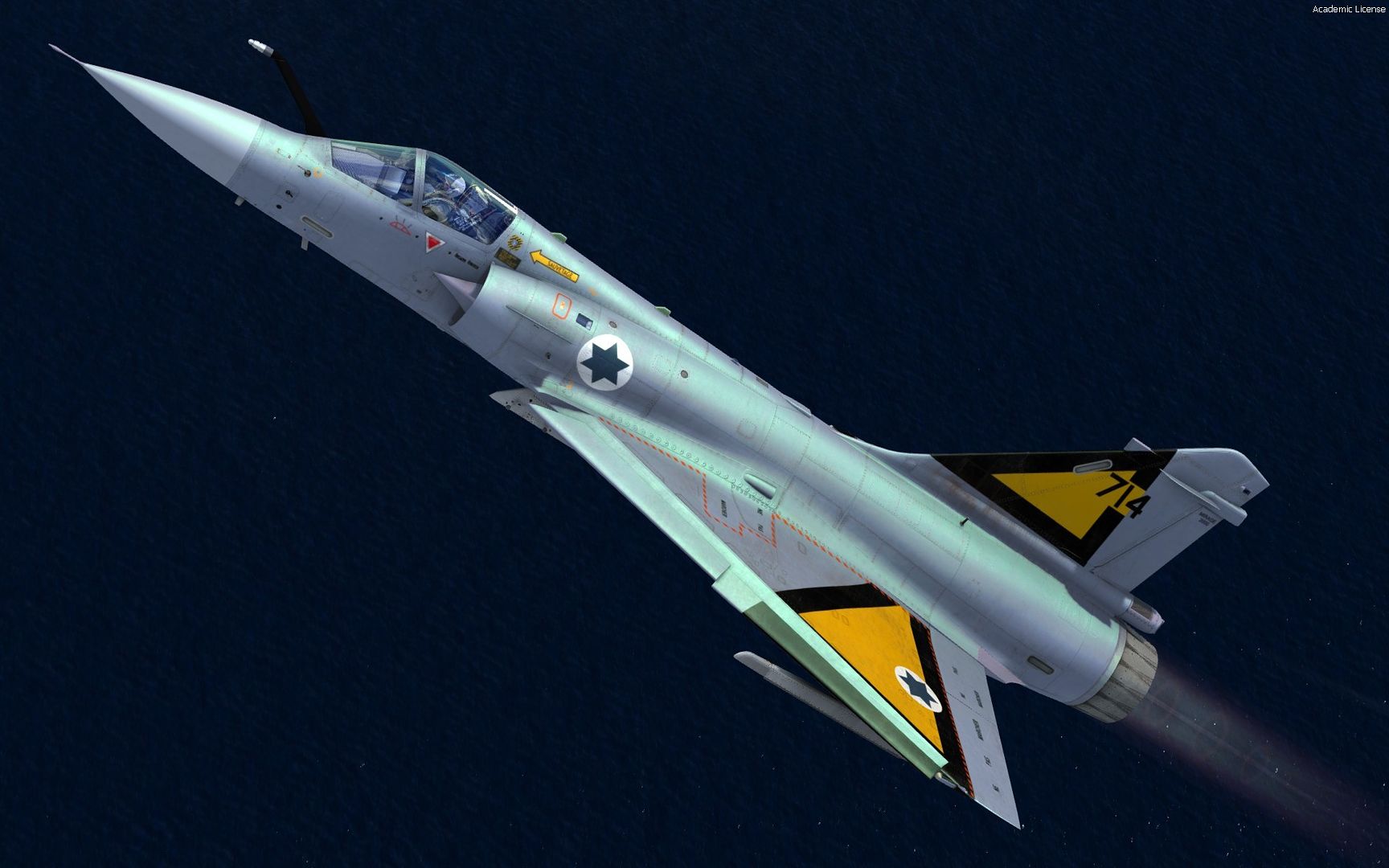
ThomasDWeiss
Members +
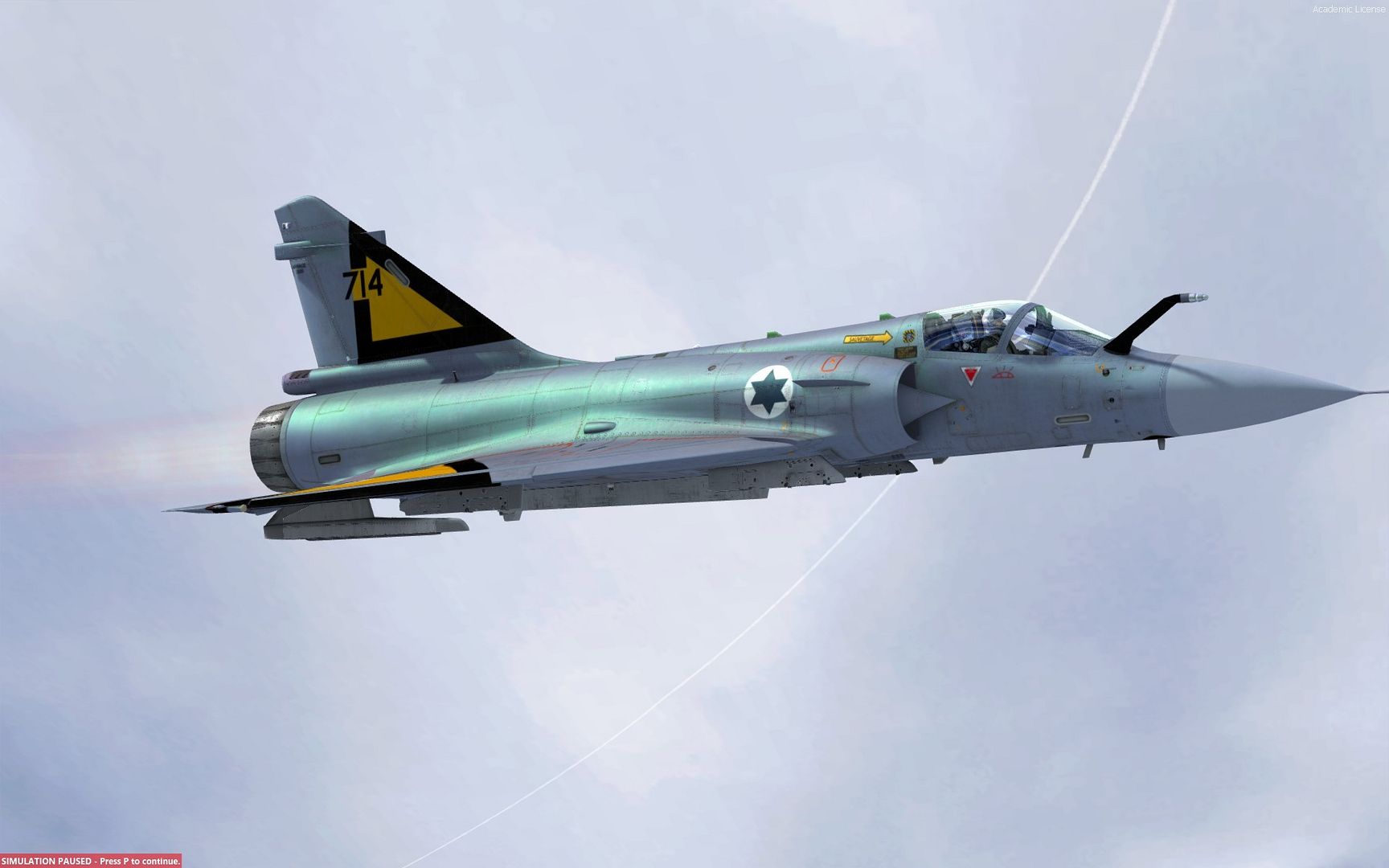
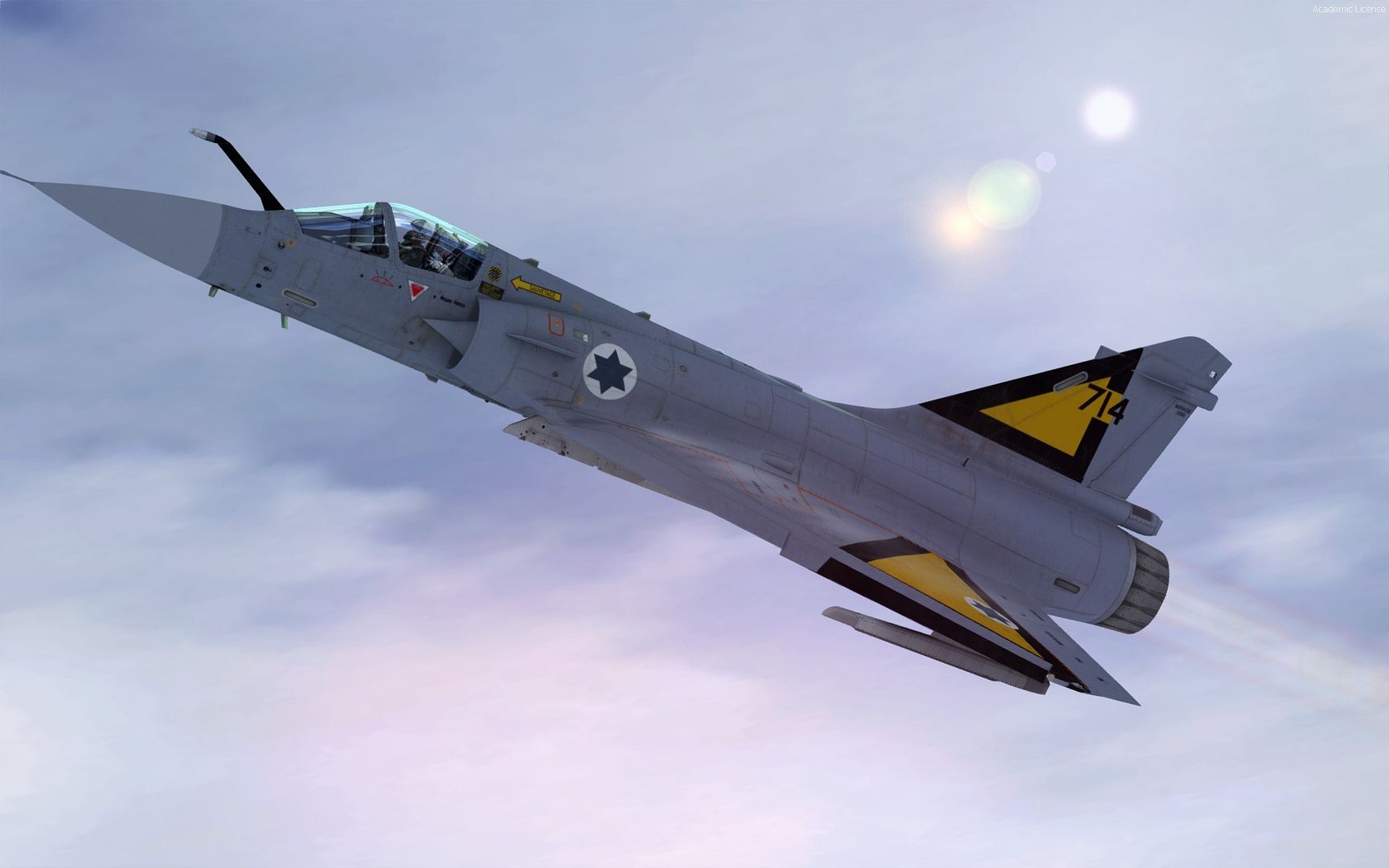
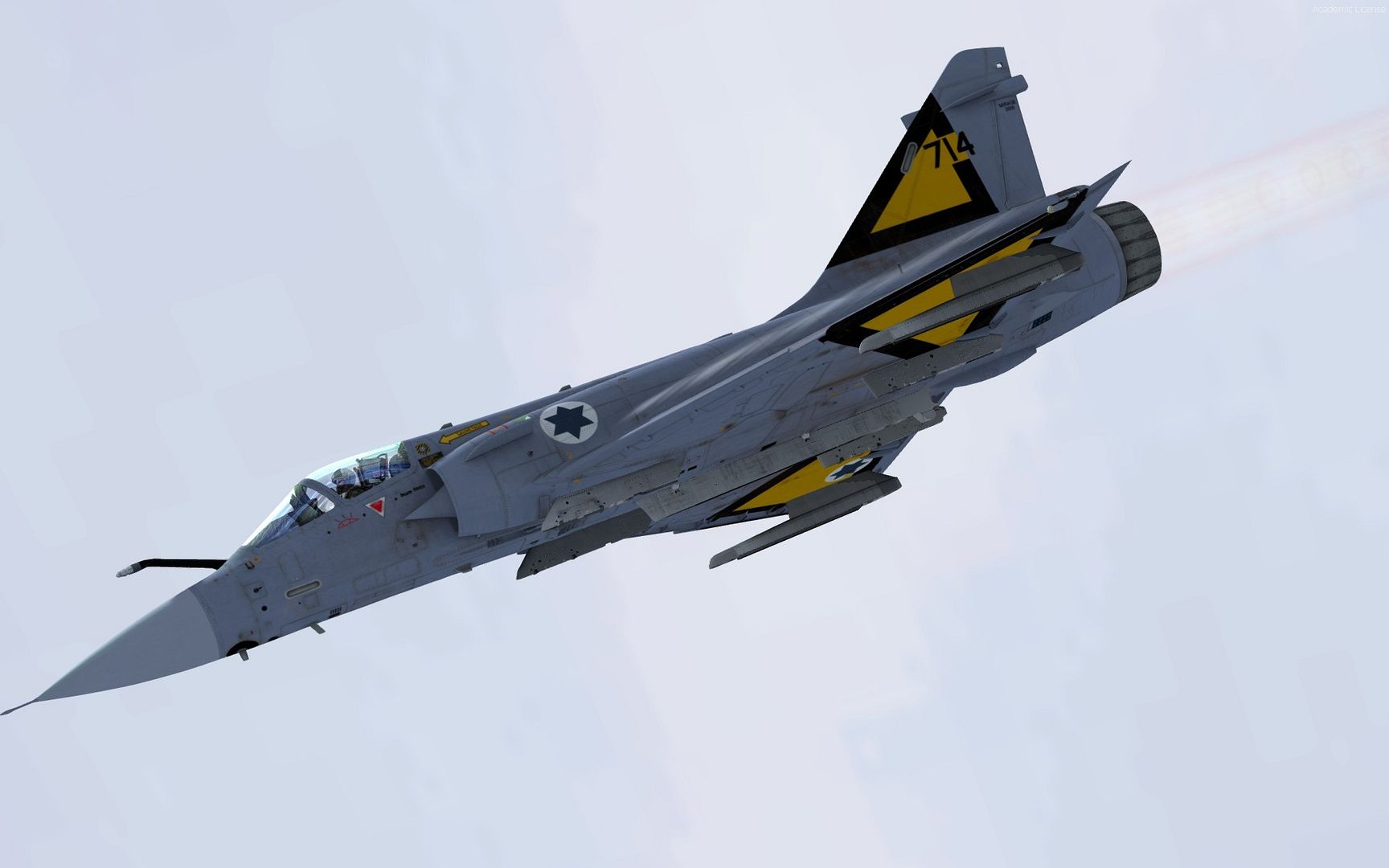
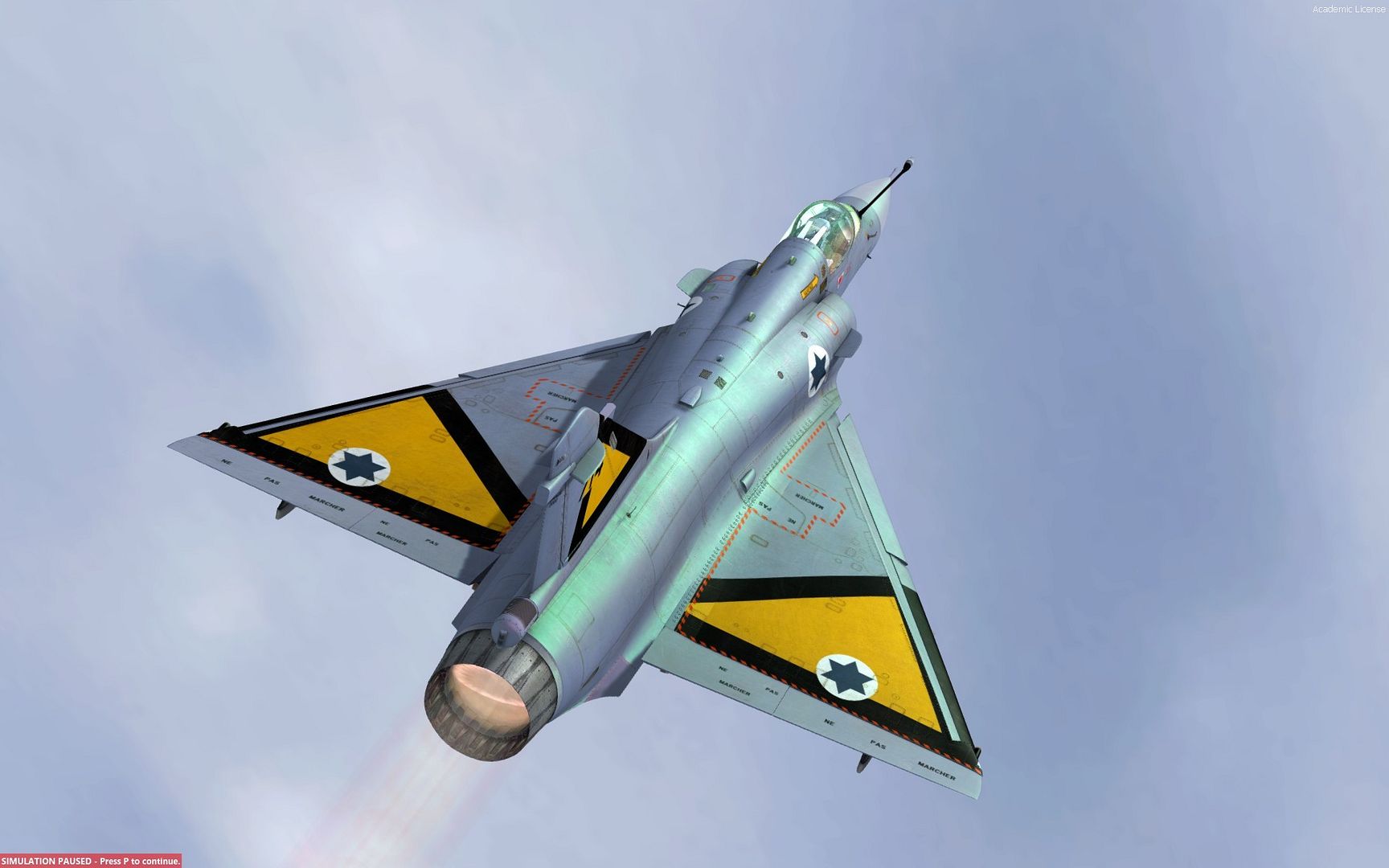

Cirrus N210MS
Charter Member
Cirrus N210MS
Charter Member
Mach3DS
Charter Member
In case youre not following the FSX forym. Take a quick once over. (Screenshots from a Fresh install of P3Dv3.2)
1. Black upper tail surface added
2. Unit Seal diameter made smaller
3. Engine Double red stripe now surrounds engine completely
4. FW-948 Text not transparent
5. Changed Pilot Helmet to generic modern grey to match photos of pilot I've seen.
Those are the changes I have made from the v1. Available now in DL area.
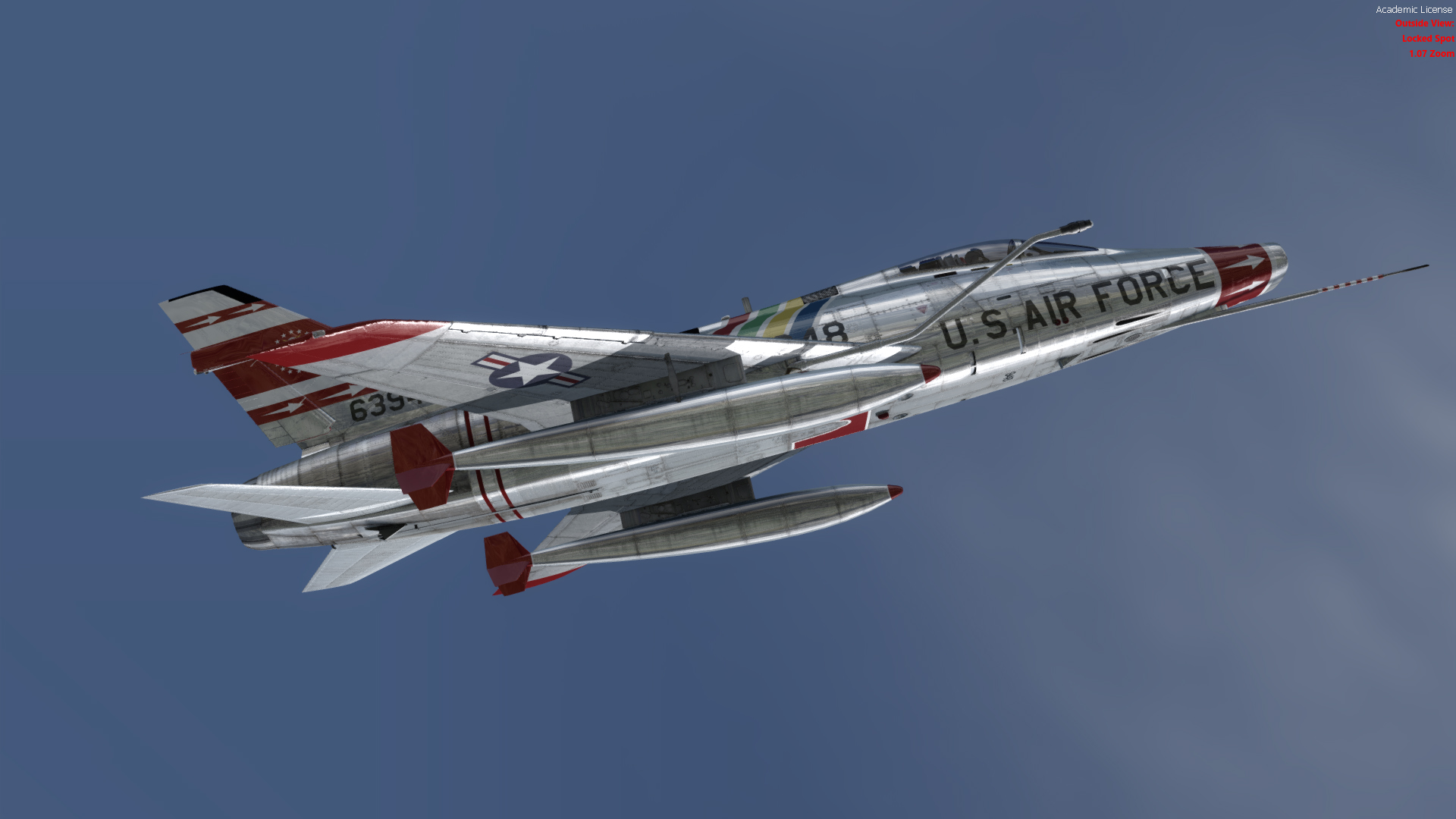
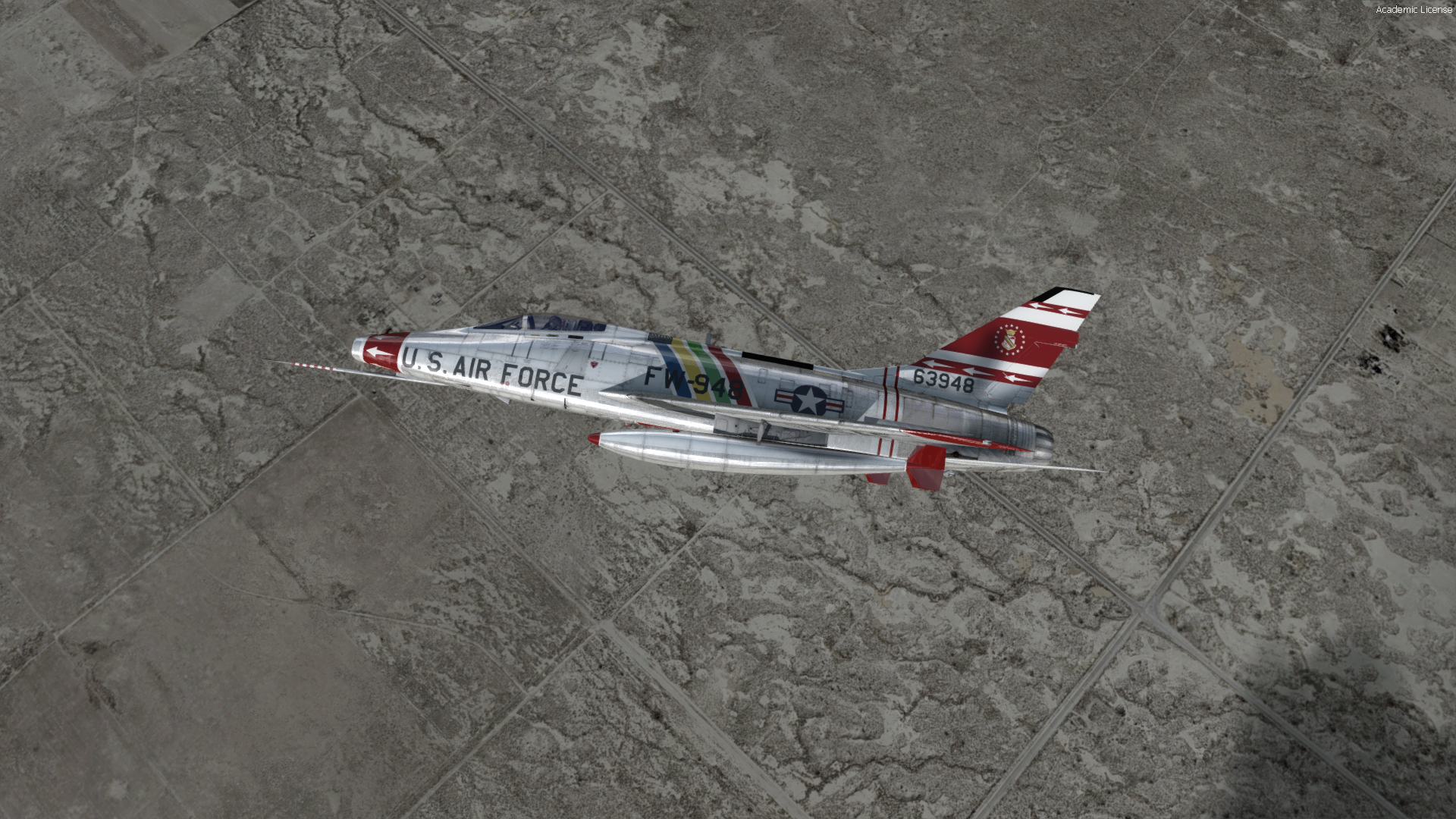
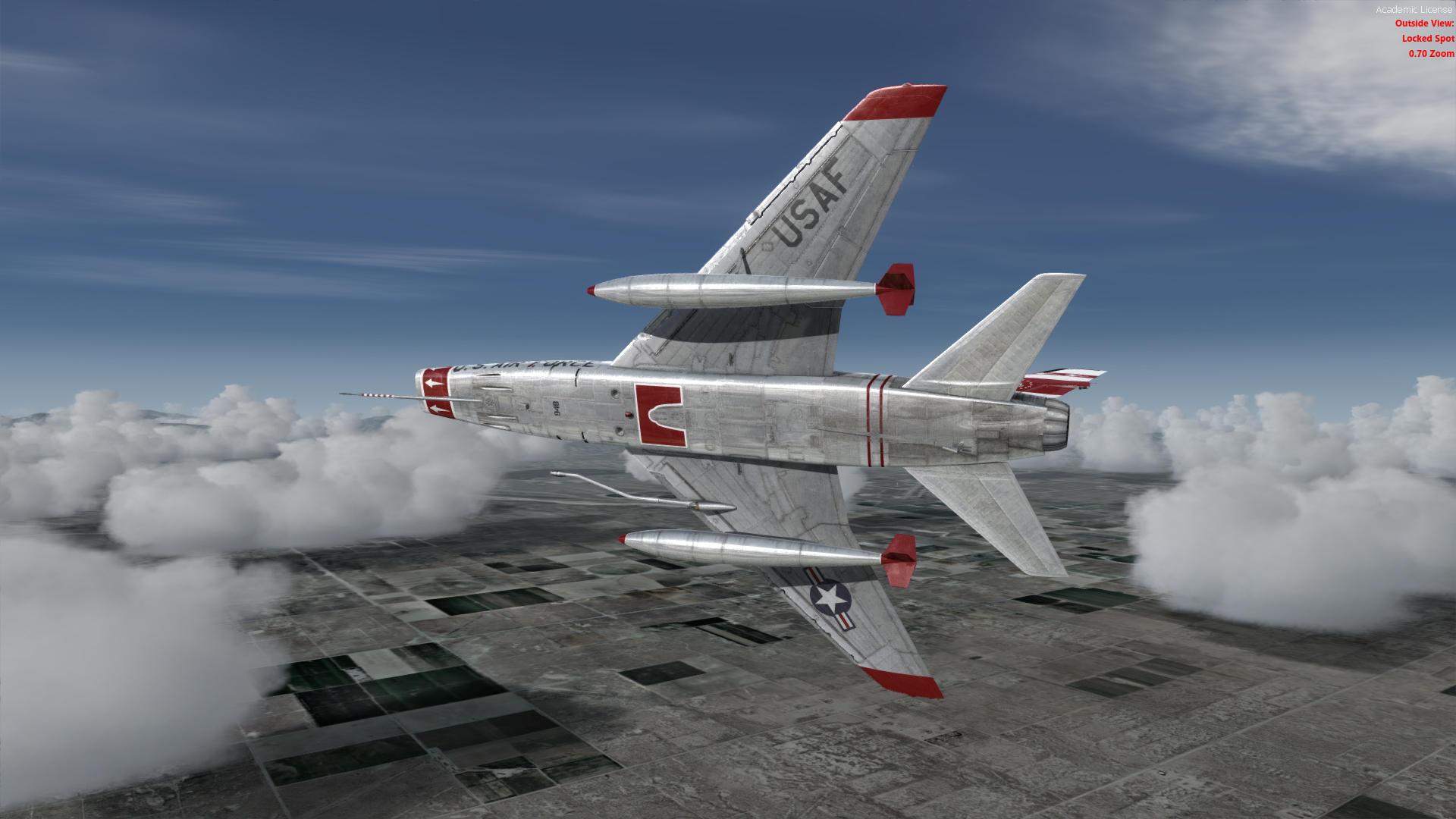
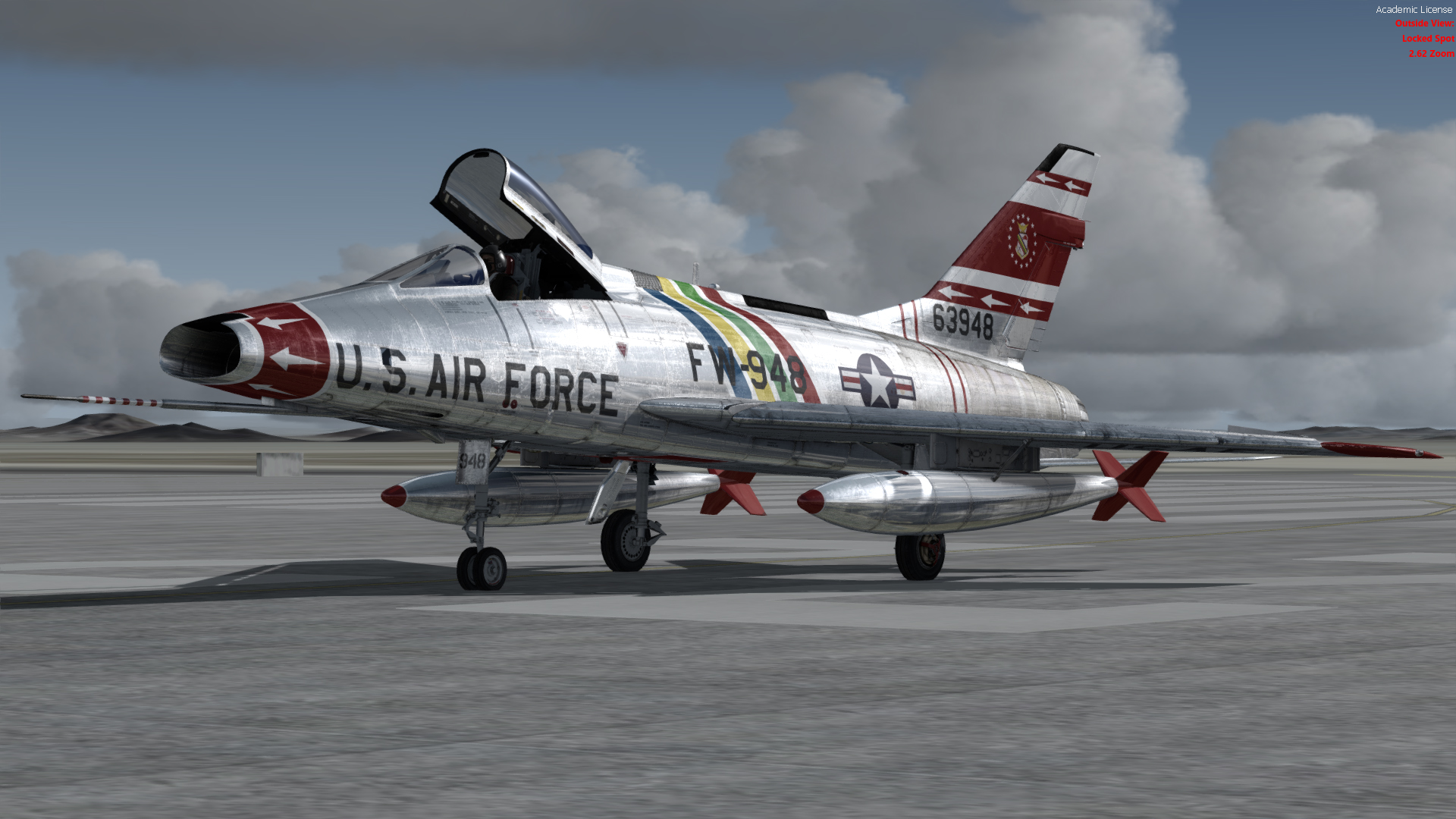
Mach3DS
Charter Member
Mach3DS
Charter Member
Daube
SOH-CM-2025
DR were implemented in v3.1 which happened only a week or so if i remember before the release of the F-100D. It was not implemented by MV. We had discussuons about it. But at the time uncertainty about how DR would impact FPS was too risky with a product that honestly was/is so smooth. So it does not use DR. You can have DR enabled it won't make any difference and won't adversely affect the look of the model or paint for any aircraft that does not use it.
Wait, normally, Milviz doesn't need to do anything to benefit from DR.
DR affects all surfaces which use the standard FSX/P3D envmap texture.
If DR is off, then the sim shows the default envmap texture.
If DR is ON, then the sim automatically draws the surrounding scenery on all the reflective surfaces. This even works with internal mirrors. I tested this in the MilViz F-15 just yesterday, the internal mirrors were showing a simplified representation of the external scenery, including the runways and some scenery objects. That was cool... a bit ugly, but cool. The effect was much more lovely on the canopy, though.
The only plane that can't benefit from the DR are the ones which use a custom texture for the environmental mapping. For example, the A2A warbirds can't benefit from it, because they refer to an internal texture called env.dds instead of the standard one. However, the default FSX planes, which all use the default envmap textures, do benefit from the DR.
So the question is: how about this F-100 ? Does it use the standard envmap texture, or a custom one ?
Mach3DS
Charter Member
Wait, normally, Milviz doesn't need to do anything to benefit from DR.
DR affects all surfaces which use the standard FSX/P3D envmap texture.
If DR is off, then the sim shows the default envmap texture.
If DR is ON, then the sim automatically draws the surrounding scenery on all the reflective surfaces. This even works with internal mirrors. I tested this in the MilViz F-15 just yesterday, the internal mirrors were showing a simplified representation of the external scenery, including the runways and some scenery objects. That was cool... a bit ugly, but cool. The effect was much more lovely on the canopy, though.
The only plane that can't benefit from the DR are the ones which use a custom texture for the environmental mapping. For example, the A2A warbirds can't benefit from it, because they refer to an internal texture called env.dds instead of the standard one. However, the default FSX planes, which all use the default envmap textures, do benefit from the DR.
So the question is: how about this F-100 ? Does it use the standard envmap texture, or a custom one ?
gman5250
Charter Member
Custom lighting conditions. v3 introduced this. and honestly it's a game changer...but it's also not friendly to repainters who don't understand lighting in FSX/P3Dv3. What I mean for example is the classic "Alpha Channel" of the diffuse map. vs. Specular file. From what I've read in this forum and elsewhere very few people actually understand what does what and how they interact. Paramount for P3Dv3. ultra realistic paints will be possible with Dynamic Reflections, and with an understanding of how lighting works. But they won't look the same in FSX/A/SE. unfortunately.
Rick is spot on correct. Painting for DR will essentially need to be approached as a separate process from this point forward. It's not only airplanes either, DR will affect metal buildings, glass, ground markings (reflective), ground wear i.e. oil stains. Anything that throws light will need to be approached with an understanding of the new light rendering capability of DR.
Alpha, spec and spec alpha are major players, and learning to use the tools effectively will require a learning curve.
The payoff will be well worth the effort IMHO.
spatialpro
SOH-CM-2025
Alpha, spec and spec alpha are major players, and learning to use the tools effectively will require a learning curve.
The payoff will be well worth the effort IMHO.
Absolutely agree 101%!

Daube
SOH-CM-2025
Rick is spot on correct. Painting for DR will essentially need to be approached as a separate process from this point forward. It's not only airplanes either, DR will affect metal buildings, glass, ground markings (reflective), ground wear i.e. oil stains. Anything that throws light will need to be approached with an understanding of the new light rendering capability of DR.
Alpha, spec and spec alpha are major players, and learning to use the tools effectively will require a learning curve.
The payoff will be well worth the effort IMHO.
EDIT: I didn't see Rick's topic about this. Please ignore the text below, it's more relevant for the other topic probably.
--------------------------------------------------
I understand how the reflections work in general, and I have a basic knowledge of the various factors, and the work they require on the various textures, alphas etc...
However there's something I don't get here.
As far as I know, the reflection process can be somehow divided into two parts:
1- the texturing process which defines how the reflection will look like. This includes alpha channel, material properties, bumpmaps etc...
2- the texture that is actually painted as a reflection.
And to simplify, in the end, point 1 decides how and where point 2 should appear.
Now, it seemed to me that the dynamic reflections in P3D are only impacting (in fact, replacing) the point 2.
So I don't really understand why the DR would require such a huge change to the point 1.
All the work that was done in point 1, for example to get a nice metallic reflection or a nice material effect, is kept and applied to the new reflection texture, which is dynamically and continuously regenerated.
Else, it would mean that all the work done by the texture artist/3D modeller for a given paint is kind of lost because you replaced the default FSX/P3D envmap ? This seems a bit exagerated.
To me, enabling the DR simply consists in replacing the default envmap texture by a new texture which moves. I don't see why it would require more work for the aircraft maker/painter ?

